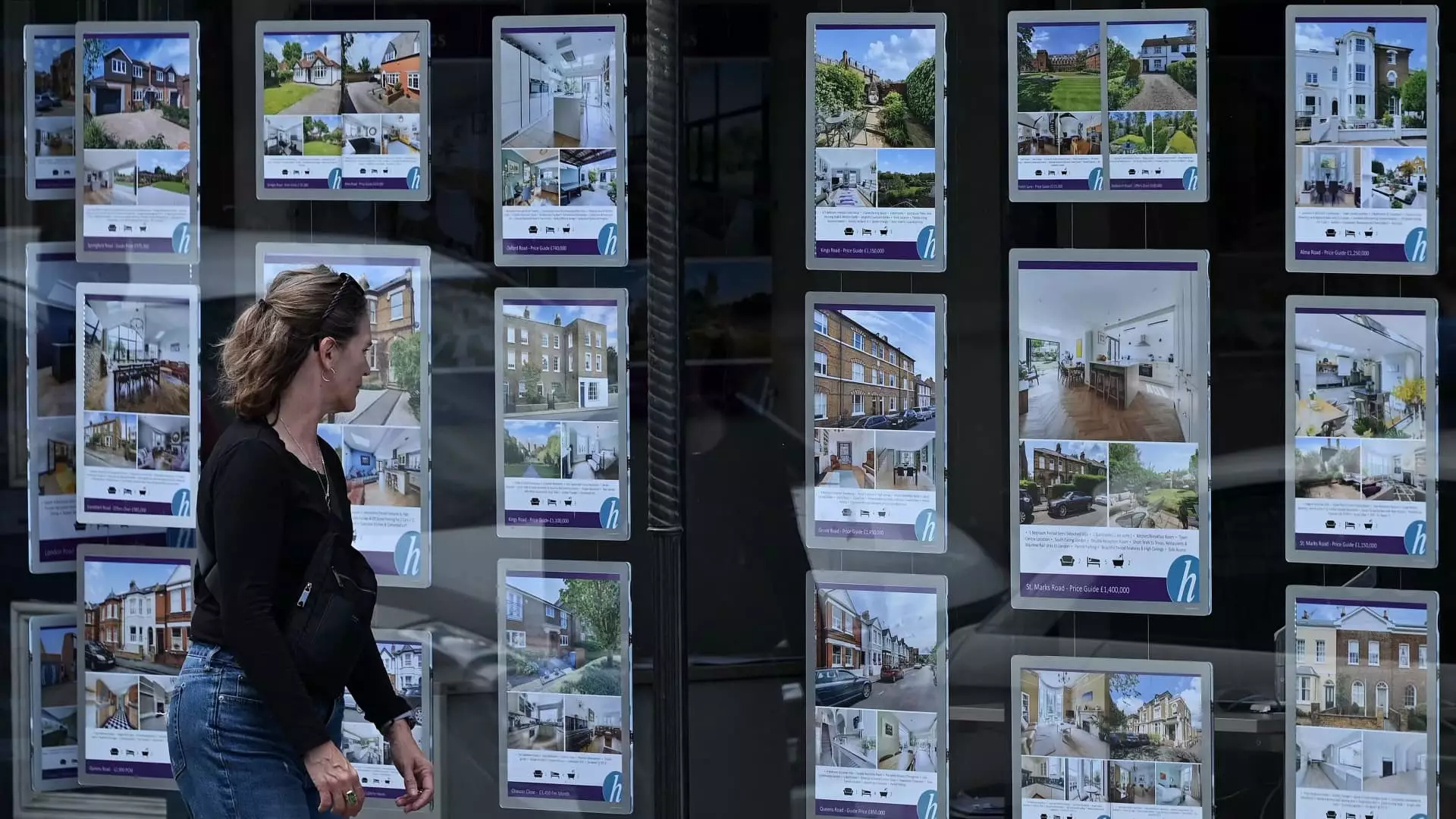The U.K. housing market is experiencing a notable revitalization, largely propelled by decreasing mortgage rates and an influx of buyers eager to make decisions they have postponed for the last two years. As data emerges reflecting a surge in home sales, it becomes critical to analyze the underlying dynamics and implications of these developments in the real estate landscape.
Recent reports highlighted a remarkable 25% year-on-year increase in home sales for the four-week period leading up to September 22, marking the highest growth rate since spring 2021. This significant rise can be attributed to changing buyer behaviors as individuals and families, who had previously been hesitant, now find renewed confidence spurred by lower mortgage rates and a recovering economy. The data, sourced from the property portal Zoopla, indicates that such a resurgence in homebuying inquiries, showing a 26% increase year-on-year, is reflective of a broader trend towards market normalization.
However, while celebrating this momentum, it’s vital to consider the context. The housing market had witnessed considerable stagnation due to elevated mortgage costs and economic uncertainties stemming from the pandemic and subsequent geopolitical tensions. Thus, the current uptick might merely signify a delayed reaction rather than a sustained recovery.
Market Behaviors and Builder Reactions
In the wake of this renewed interest in the housing market, shares of prominent U.K. homebuilders like Taylor Wimpey and Barratt Developments have seen a commendable increase of 1.4%. This rise is indicative of investor optimism, but such short-term gains should be approached with caution. A singular focus on stock performance could mask potential fluctuations caused by external economic factors, such as inflation rates or impending changes in government policy.
Furthermore, while house prices are also starting to increase—reportedly rising 3.2% year-on-year, their sharp acceleration is not uniform across the nation. For instance, the growth is more pronounced in Northern Ireland and Scotland while areas in the north of England have outstripped the south. Urban centers like London display resilience with a modest 2% growth, although the varying rates amplify concerns regarding regional disparities.
The decline in mortgage rates to an average of 4.57% for five-year fixed terms has catalyzed this market rebound. Many potential buyers, who had been sidelined, are now emboldened by borrowing costs that have substantially retreated from last year’s average of 5.53%. This confidence boost is crucial; however, it also poses a risk as fluctuating rates could drive buyers away again if the downward trend does not stabilize.
Notably, some fixed-rate products have dipped as low as 3.7%, raising questions about the long-term sustainability of these rates amid ongoing discussions about monetary policy adjustments. As the Bank of England prepares for its upcoming November 7 meeting, speculation around further rate cuts adds a layer of uncertainty—what might initially appear to stimulate demand may inadvertently create volatility in the housing landscape.
Anticipated Impact of Tax Policy Changes
As part of the broader economic picture, anticipated changes in government tax policies may play a pivotal role in shaping market trends in the near future. With the Labour government hinting at potential tax hikes to address a substantial budget shortfall, property owners may decide to sell off their buy-to-let properties, potentially leading to a surplus of housing stock. This influx could effectively dampen house price inflation as supply outstrips demand.
Furthermore, discussions about capital gains tax and inheritance tax adjustments could add additional pressure on the market. Investors and homebuyers alike are likely to remain on alert, as any significant policy alterations may influence their financial choices moving forward. This subtle shift in the market sentiment might ensure a buyer’s market persists, with enough housing options curtailing rapid price growth.
Overall, the current state of the U.K. housing market reflects a cautious optimism buoyed by lower mortgage rates and increased buyer activity. However, the nuances of regional disparities, upcoming governmental policies, and the unpredictable nature of mortgage rates lay a precarious foundation upon which this market resurgence is built. As stakeholders navigate these waters, they must balance the immediate benefits of increased sales against the potential for longer-term instability. The coming months will be critical in determining whether this is a transient phase or the beginning of a more robust recovery for the U.K. housing market.

